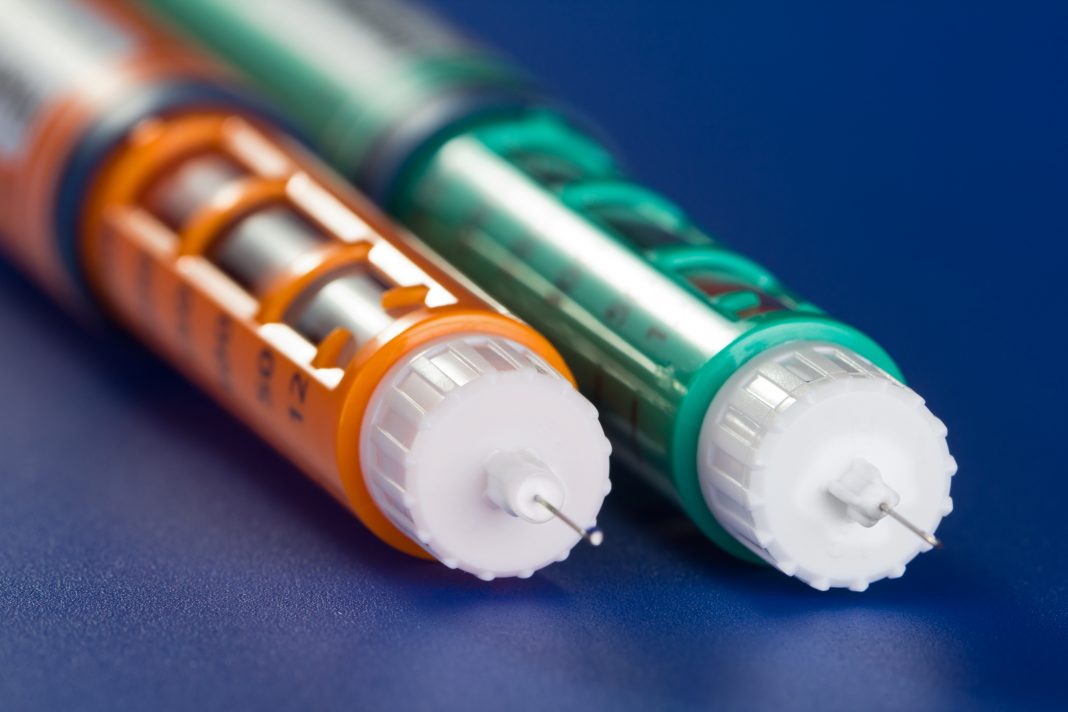Liping Yu, at the Barbara Davis Center for Diabetes, highlights how we can recognise and diagnose adult-onset type 1 diabetes
Type 1 diabetes (T1D) is an autoimmune disease caused by the destruction of insulin-producing beta cells that reside within the pancreas by our own body’s immune system.
Although T1D is most often diagnosed in childhood, it has been recently shown in epidemiological studies to be predominantly a disease of adult-onset. The disease progression is more aggressive in children while the autoimmune process becomes less aggressive with the ages of disease onset.
The majority of adult-onset T1D are of the slowly evolving autoimmune process and their clinical phenotype is often intermediate between typical T1D and type 2 diabetes (T2D), under the category of hybrid forms of diabetes by the World Health Organization. Therefore, adult-onset T1D is not easily recognized in clinics for most cases since they do not require insulin treatment initially and masquerade as T2D.
Distinguishing adult-onset T1D from T2D is clinically important
People with T1D, unlike T2D, are often given early insulin treatment for the benefit of clinical care, avoiding misdiagnosis is crucial. Unlike child-onset T1D with an expression of multiple islet autoantibodies, a single islet auto- antibody positivity of GAD65 auto- antibodies (GADA) is most common to see in adult-onset T1D and in most cases, the only diabetes-associated autoantibody.
At present, radio-binding assay (RBA) is a ‘gold’ standard method to identify GADA, serving for clinical diagnosis and screening in clinical trials. In the screening of islet autoantibodies, a great proportion of low-affinity binding autoantibodies are present by RBA, and they are usually to be seen in those with single islet autoantibody positivity.
It is well documented in multiple studies that low-affinity islet auto- antibodies are at low risk, often not associated with the disease and most of them disappear during the longitudinal follow-up behaving as a ‘transient’ positivity(1). Unfortunately, RBA cannot distinguish between high- and low-affinity binding auto- antibodies, resulting in poor accuracy in the prediction of T1D(2).
Although RBA demonstrates high specificity to detect islet autoantibodies (98-99%) biochemically, in terms of disease, the overall accuracy of clinical diagnosis is poor due to the large proportion of low-affinity binding antibody detection. From multiple population studies, it is recently been noticed that those who test positive for GADA by RBA3, or by ELISA4, in a population, such as adults, with a low prevalence of T1D will be a mixture of true positives (T1D) and false positive (T2D). This contrasts with children having diabetes with a high likelihood of T1D where false positives will be low.

ECL assay and detection
To overcome these shortfalls, we have developed and extensively validated a non-radioactive electrochemiluminescence (ECL) assay to more specifically determine disease-associated GADA1-2 for accurately identifying adult-onset type 1 diabetes (3). The ECL assay has been shown to be as sensitive as RBA but importantly, it possesses a higher-affinity autoantibody detection feature, effectively removing low-affinity signals (false positives).
In several major clinical trials, ECL- GADA was demonstrated more predictive of T1D than RBA1-3 and it discriminates individuals with high-affinity GADA at high disease risk from those identified by RBA with low-affinity GADA at low disease risk. In two adult-onset diabetes clinical studies, Action LADA in the UK (aged 30-70 years) and Diabetes in Young Adults (DiYA) study in the USA (aged 20-45 years), ECL-GADA was compared to RBA-GADA for disease specificity referral to clinic phenotypes of diabetes with follow-up for the requirement of insulin treatment(3).
Of total adult-onset diabetes patients, 9.7% of 6156 patients in Action LADA and 6.6% of 2063 patients in DiYA study were found positive for islet autoantibodies by RBA. Both studies were shown that GADA was the most prevalent islet autoantibody and predominated, 90.5% in Action LADA and 91.9% in DiYA study, respectively, while other islet autoantibodies (IA-2A or ZnT8A) were detected in only a small fraction, only 0.9% in Action LADA and 0.05% in DiYA.
What are the differences between child-onset and adult-onset?
Unlike child-onset diabetes, the majority of adult-onset diabetes patients positive for islet autoantibodies were single GADA without other islet autoantibodies, 78.4% single GADA in Action LADA and 66.4% single GADA in DiYA study. Compared with ECL-GADA, more patients were tested RBA-GADA positive. Of the patients positive for RBA-GADA, 32.4% in Action LADA and 25.6% in DiYA study tested negative for ECL-GADA.
This aligns with previous findings that only 20-40% of single GADA by RBA in T1D-screening of the general population or first-degree relatives of patients with T1D were confirmed by ECL assay. Importantly, patients with positive RBA-GADA but negative ECL- GADA displayed similar characteristics to T2D across both cohorts. These patients were more obese, less likely to have multiple autoantibodies, and less likely to require early insulin treatment during the clinic follow-up. Of the patients positive for ECL-GADA, multiple autoantibodies did not add the risk of requiring early insulin treatments.
GADA-affinity testing demonstrated that RBA-GADA confirmed by ECL assay were of higher affinity compared to those not confirmed by ECL assay1-3. This is illustrated by the requirement of a higher level of native GAD65 protein for the absorption of low-affinity GADA. It concludes that a lower affinity of GADA detected by RBA was less or not predictive while ECL-GADA assay detects high-affinity GADA and is, therefore, a more accurate predictor of adult-onset T1D.
It highlights the importance of enhancing current clinical screening methods. Not only is the ECL assay high-efficiency with low cost and non-radioactive (unlike the RBA), but it also discriminates disease-relevant GADA (also works for other islet autoanti-bodies) from low-risk GADA and thus offers a better prediction of adult-onset T1D who may require early insulin treatment, leading to a more accurate diagnosis and management of the disease.
References
- Miao D, et al. GAD65 autoantibodies detected by electrochemi-luminescence assay identify high risk for type 1 diabetes. Diabetes. 2013;62:4174-8.
- Miao D, et al. Type 1 Diabetes TrialNet Study Group. Electro-chemiluminescence assays for insulin and GAD autoantibodies improve prediction of type 1 diabetes risk. Diabetes Technol Ther 2015;17:119–27.
- Gu Y, et al. Improving clinical utility of GAD65 autoantibodies by electrochemiluminescence assay and clinical phenotype when identifying autoimmune adult-onset diabetes. Diabetologia. 2021;64:2052-60.
- Jones AG, et al. Latent autoimmunity diabetes of adults (LADA) is likely to represent a mixed population of autoimmune (type 1) and nonautoimmune (type 2) diabetes. Diabetes Care. 2021;44:1243-51.

This work is licensed under Creative Commons Attribution-NonCommercial-NoDerivatives 4.0 International.


